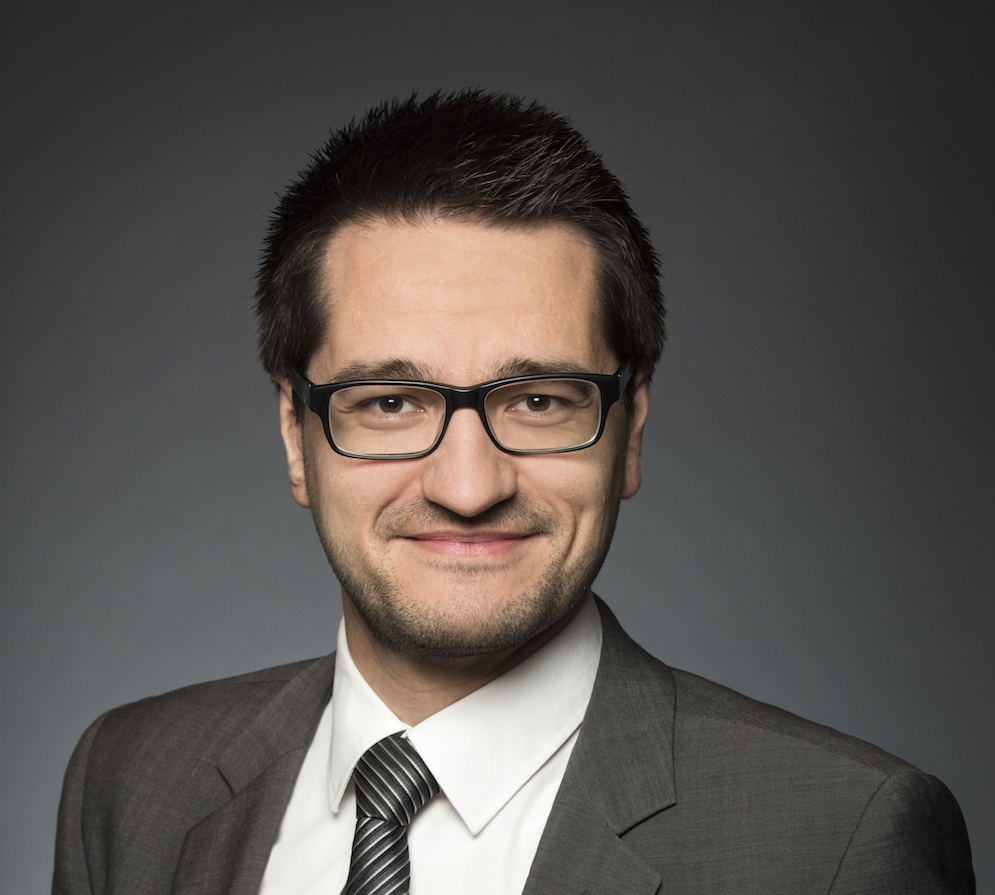Canada’s Defense Strategy Falls Behind in the Quantum Age
Spurred on by recent quantum computing milestones, a global “quantum race” is underway—but Canada is still without a strategy.

Published by The Lawfare Institute
in Cooperation With

Governments around the world are in a race against time to both leverage the opportunities and mitigate the risks of the next quantum technological revolution. Quantum materials will underpin next-generation electronics and equipment for the military environment, while quantum communication technologies offer ultra-secure communication channels for sensitive information. Quantum computing, perhaps the most disruptive technology, promises improved simulation and modeling capabilities and powerful artificial intelligence. But this computational advantage also poses cyber and national security risks to existing cybersecurity infrastructure, which is secured using the types of mathematical problems that quantum computers will be capable of solving. Given these risks, governments need to prepare a “quantum firewall”—and fast.
Many countries are investing in the quantum ecosystem through various national and international programs and have developed national and departmental quantum strategies. China, for example, is deeply committed to leverage quantum advances, including in the quantum arms race. In 2018, the United States launched its national strategy through a major quantum initiative and has published more than 40 reports and strategies to further the country’s quantum ecosystem, including about the opportunities for defense and risks for national security. Similarly, in 2020, the United Kingdom released a strategic vision that provides an outlook for the next decade, as well as a detailed report on quantum information processing considerations for defense and security.
By comparison, Canada is missing in action and lagging behind—despite its global leadership in quantum research, driven by a rich university-led ecosystem. That’s not to say that Canada has fully overlooked quantum. The federal government published two innovation reports from 2014 and 2016 mentioning quantum innovation as a priority in Canada, and the 2018 National Cyber Security Strategy similarly acknowledges the need to have “quantum-resistant solutions.” Canada’s first federal department quantum “strategy” was finally released on Jan. 18 by the Department of National Defence and the Canadian Armed Forces—the so-called “Defence Team.” Yet this new report falls far short of delivering a meaningful strategy, even just for defense. It fails to address important questions about the potential impacts of quantum technologies on Canada’s national defense and security, and on society more generally—and it highlights Canada’s failure to deliver a comprehensive vision in the growing quantum sector.
Many technical hurdles must be overcome to make quantum capabilities available, but that’s no reason for Canada to dawdle. Quantum technologies might be developed within the next five to 20 years, or even sooner. And when they arrive, their use will not be confined within restricted facilities—instead, they will be accessible through publicly available cloud services connected to various quantum hardware implementations. So while the quantum threat might seem distant, a response is required right now. In the global arms race, it might already be too late.
Even though new cybersecurity standards have been in development, the implementation of new standards is historically a slow process. Malicious actors can already retrieve encrypted information to later be decrypted using quantum computing methods when those methods become available. More than any other technology revolution, the everyday quantum reality requires foresight and readiness before its advent.
The Defence Team’s announcement claims that its Quantum Science and Technology Strategy will “advanc[e] Canada’s defence, safety and security interests in the emerging field of quantum science” and help “to take advantage of cutting-edge science and adapt to quantum innovation.” This is, however, quite a generous title and aim for a document that focuses on research and development (R&D), investments, and operational partnerships for quantum sensing technology. Indeed, authored by the assistant deputy minister heading Defence Research and Development Canada (DRDC), the report is really a belated R&D road map for the agency.
Yet this road map is an important first step in providing Canada with necessary leadership in quantum technology R&D to be ready for what’s to come—although, admittedly, nobody really knows what is to come. Recognizing Canada’s strong leadership in quantum technology R&D, DRDC notes the increasing global competition to transition quantum technologies to market launch and highlights Canada’s need to be defensively prepared.
The first goal of DRDC’s “strategic” approach is to transition quantum sensing technologies from the lab into robust, fieldable prototypes. Quantum sensors promise new or improved, highly sensitive detection of physical phenomena and objects that can be used, for example, to detect magnetic fields or stealthcraft. In parallel to R&D efforts, DRDC plans to assess threats and vulnerabilities, as well as to develop security and countermeasures against those threats. However, while quite comprehensive on prototyping quantum sensor technology, the road map inexplicably leaves out the three other key areas of quantum technology: communications, materials and computing. Each of these topics deserves recognition but is mentioned only in passing, if at all.
It’s not just unfortunate but concerning that the government doesn’t consider such technologies as a priority—or even an opportunity—for the Defence Team. Quantum materials could bring to the battlefield next-generation microelectronics with improved capabilities, while quantum communication technologies could help secure communication in sensitive areas, as well as global positioning. DRDC also disregards the myriad applications proposed for quantum computing in simulation, optimization, and artificial intelligence that may contribute to defense efforts. For example, quantum computers could be used for large-scale military deployment simulations, the development of novel materials, and to leverage (or counter) sophisticated artificial intelligence systems.
The road map also aims at fostering partnerships interdepartmentally, domestically with universities and industry, and internationally to advance quantum technology development for defence at both national and international levels. The report vaguely suggests that these partnerships can be leveraged to develop quantum technologies for defense, security, and public safety purposes but doesn’t offer any concrete examples, proposals or action plans. As the road map notes, quantum science and technology innovation has been a national “priority” since 2014—so why are these interdepartmental relationships being proposed more than five years later?
Overall, the report can be summarized as a commitment to work with the government and industry to further quantum research and innovation—which makes sense for a road map authored by defense R&D agencies. The road map highlights DRDC’s aim to improve the department’s capacity to remain apprised of defense and security impacts by emerging quantum technologies. Noting that labor shortages of quantum-trained personnel are likely, the road map calls for the development of a quantum-trained workforce and sustained R&D.
The scant 15-page strategy leaves readers with the feeling that something is missing. The report does not offer any policy analysis of the impact of quantum technologies on Canadian society. There is no security framework to protect the Canadian quantum sector and to protect the country from potential quantum-enabled threats. These omissions in the Defence Team’s quantum strategy could be understandable if the report was published as a focused perspective following a more general national quantum strategy. However, no such national quantum strategy exists—at least not publicly.
Definitive and decisive action is required to set Canada on the path to establish and sustain leadership in the global quantum sector. Canada will not remain relevant in the quantum race by supporting R&D from the sidelines with half-baked promises to prioritize Canada’s quantum ecosystem.
This initial road map can only whet Canadians’ expectations for a more comprehensive strategy. So what would a true defense quantum strategy look like? It would need to be released by the minister of national defence—and involve all branches of the Defence Team, notably Canada’s cryptologic agency, the Communications Security Establishment. It would highlight the ethical, warfare, and national security dimension of quantum technology. Such a strategy should be developed, at least in part, in collaboration with the minister of public safety and the minister of foreign affairs, who share oversight over part of the intelligence and national security apparatus. The report obviously comes up short in this dimension, which is concerning not just for the Defence Team but also for the whole government and country.
A strategy would also need to reflect on how quantum technologies—of all types, not just sensor technology—will impact Canada’s security and defense, and explain how the Defence Team intends to build a “quantum firewall” to address the potential negative impacts of defense-themed quantum technologies on society, foster the ethical development of quantum technologies, and lead the global community in setting the standard for a safe ecosystem in which quantum technologies can be applied. It would also need to engage with the policy and regulatory needs—at both the national and international levels—for Canada and the world to be quantum-ready. While there is some nebulous guidance on post-quantum readiness to federal agencies from the Canadian Centre for Cyber Security, a strategy should discuss challenges and opportunities for the cryptologic community, and how to rethink data governance and security for the quantum age. For example, it could make sense to consider classifying some quantum technologies under the military, dual-use, or strategic goods frameworks to control their development, export, commercialization and use. Use of these frameworks to regulate cryptographic tools was probably an error, but they could be useful concerning quantum technologies.
Canada needs a strategy along these lines both to ensure Canadians that the country takes the impact of quantum technologies seriously and to signal the country’s presence in the global quantum sector. It is not enough to say that Canada has a thriving quantum R&D system, as R&D is only one aspect of the overall national and global quantum ecosystem—even more so given Canada’s declining R&D investment in recent years.
Hopefully this first Canadian government report is not the last and, instead, marks the beginning of a strong government initiative planned to strengthen Canada’s relevance in the quantum sector. Many important questions about the impact of quantum technologies on Canadian society remain. How will Canada support its quantum ecosystem, and build and maintain a quantum-trained workforce? What about building nationally shared quantum computing capabilities? What about incentivizing Canadian’s quantum intellectual property? What are the potential ethical impacts of quantum technologies on society, and what are the opportunities for responsible quantum leadership? How will Canada address the security threats posed by quantum technologies to national security and private enterprises? What about preparing Canada’s policy framework to protect industries, infrastructure and citizens.
There are so many questions and so few answers—especially in the Canadian context. It’s time for the Canadian government to publish a strategy and fund transdisciplinary research to prepare the country for what’s to come. Government and funding agencies need to support not just corporate R&D but also universities and start-ups. Current leadership lies with a few researchers who have built bridges within Canada’s thriving quantum community with initiatives such as Quantum-Safe Canada. It’s now time for the government to step in and provide funding—and leadership—to carry these initiatives further.
The Canadian government appears to be floundering while other countries drive the quantum market forward. If every other country can develop and publish a national strategy, why can’t Canada?





.jpg?sfvrsn=d5e57b75_7)
